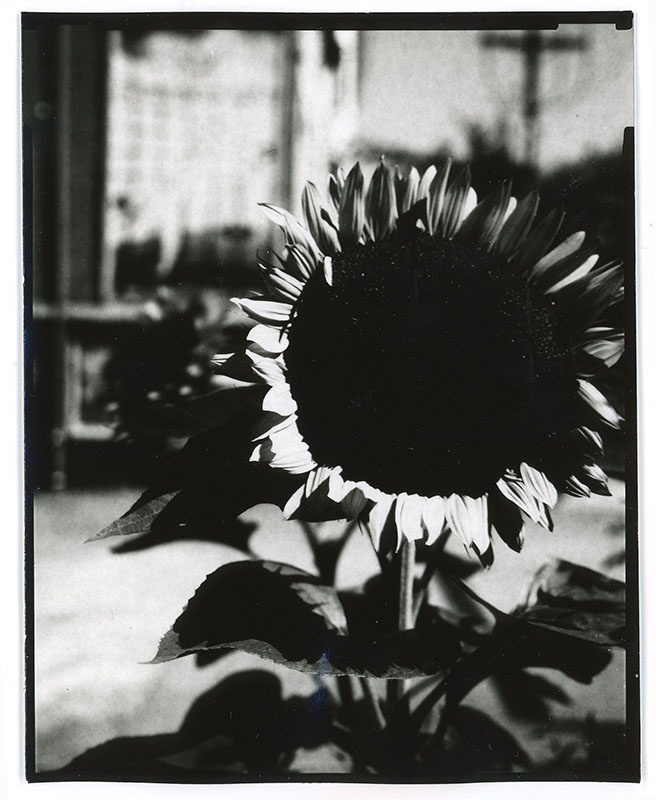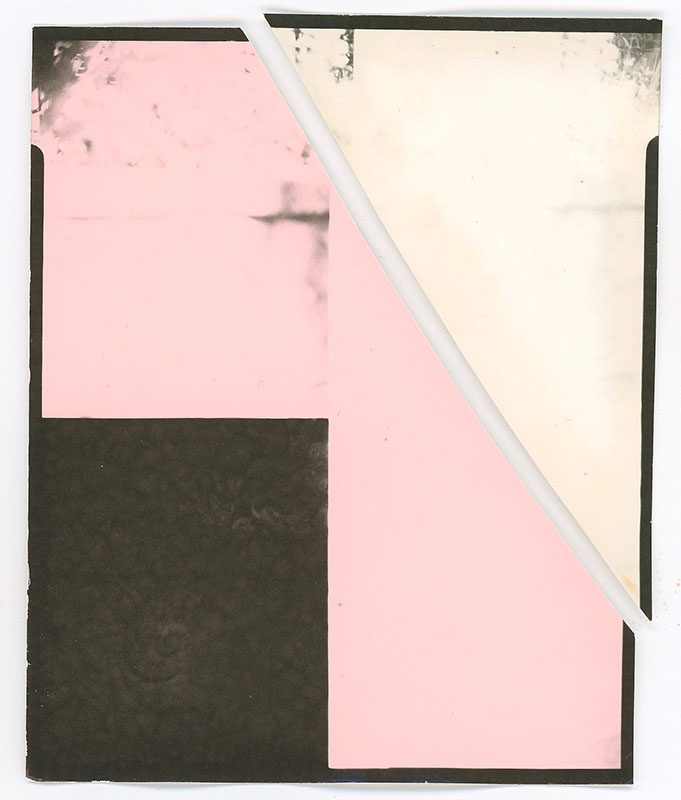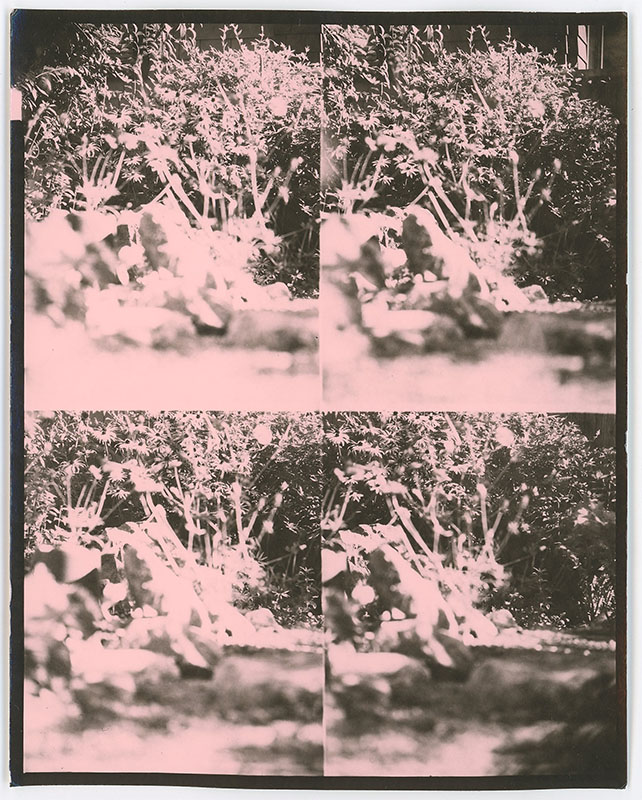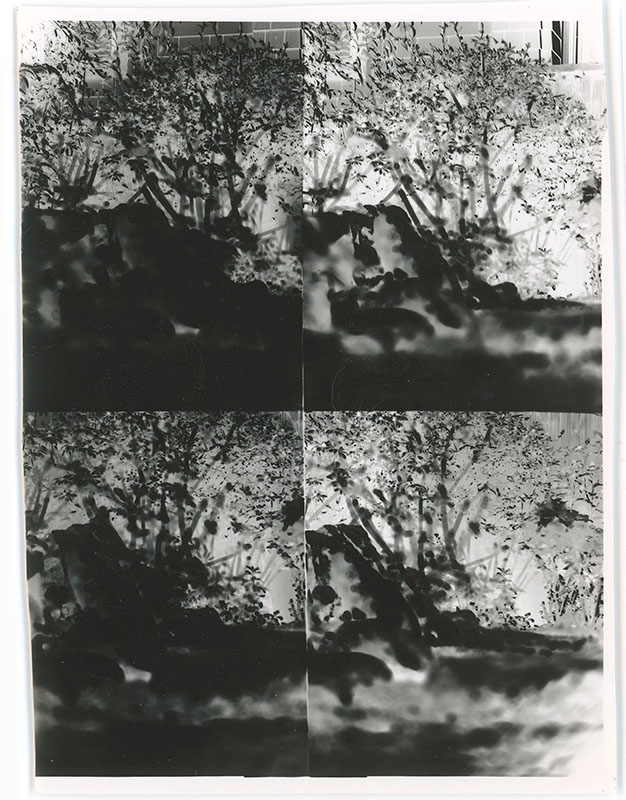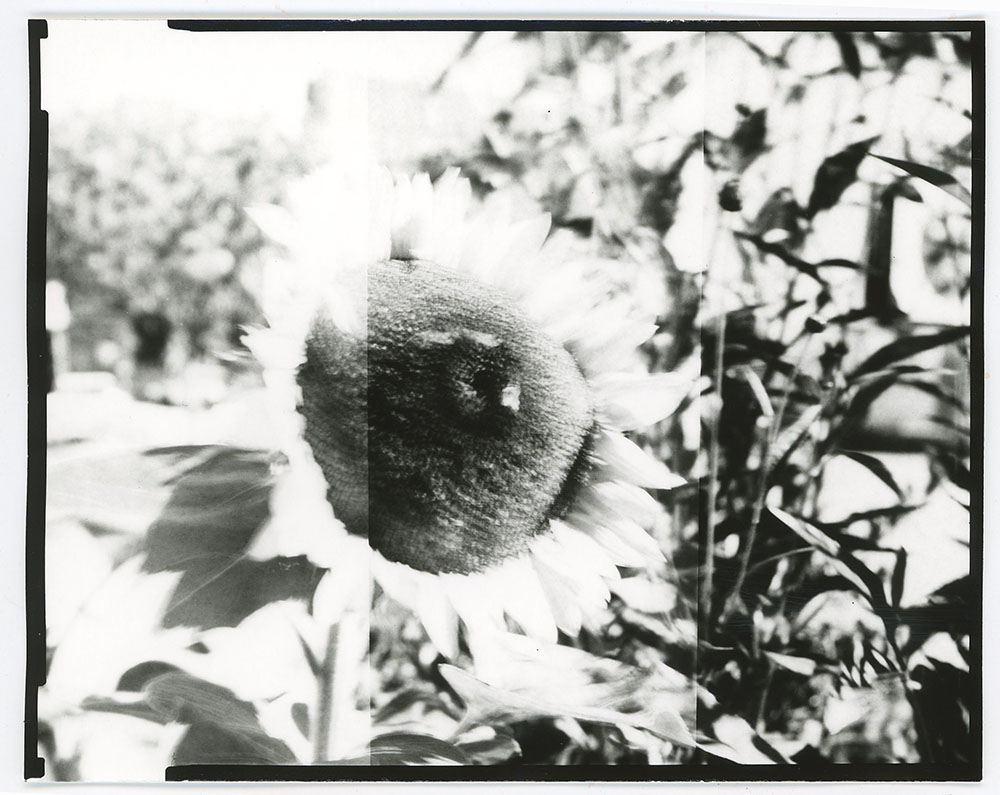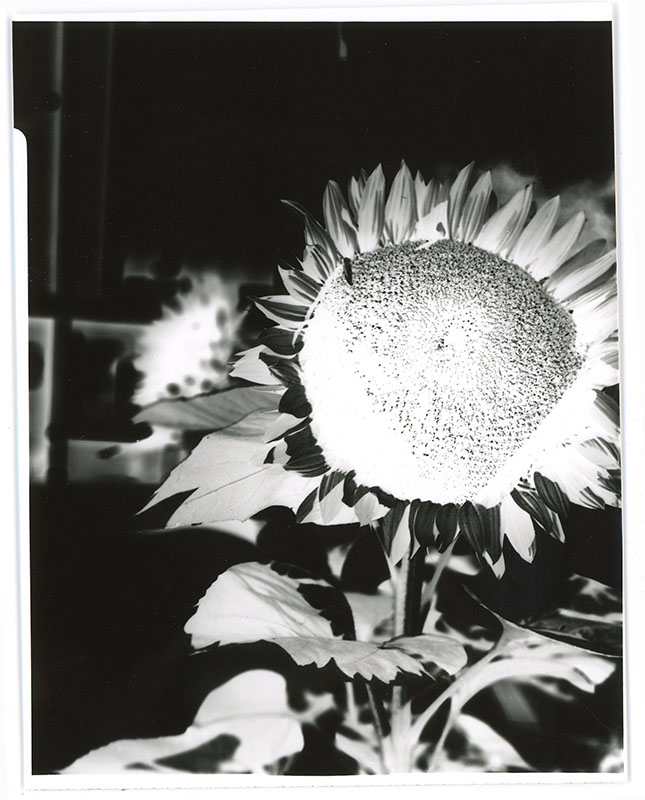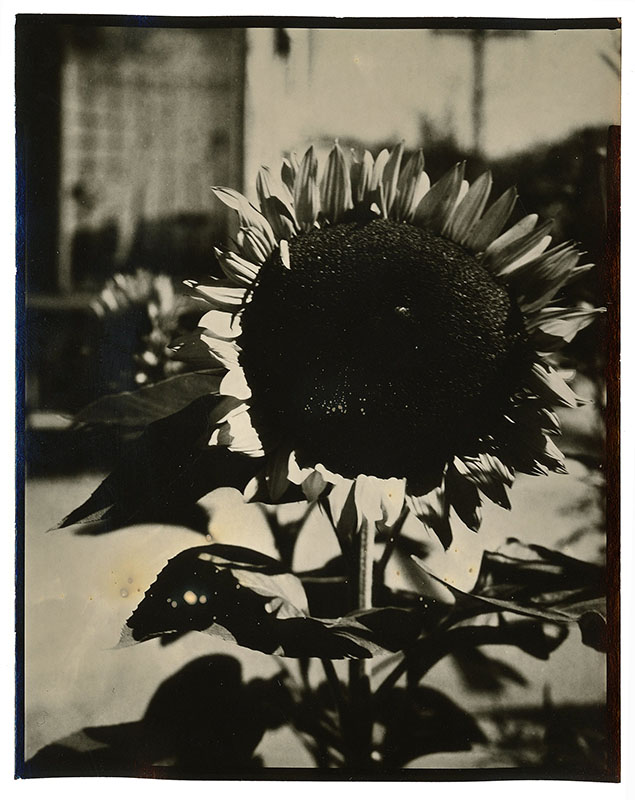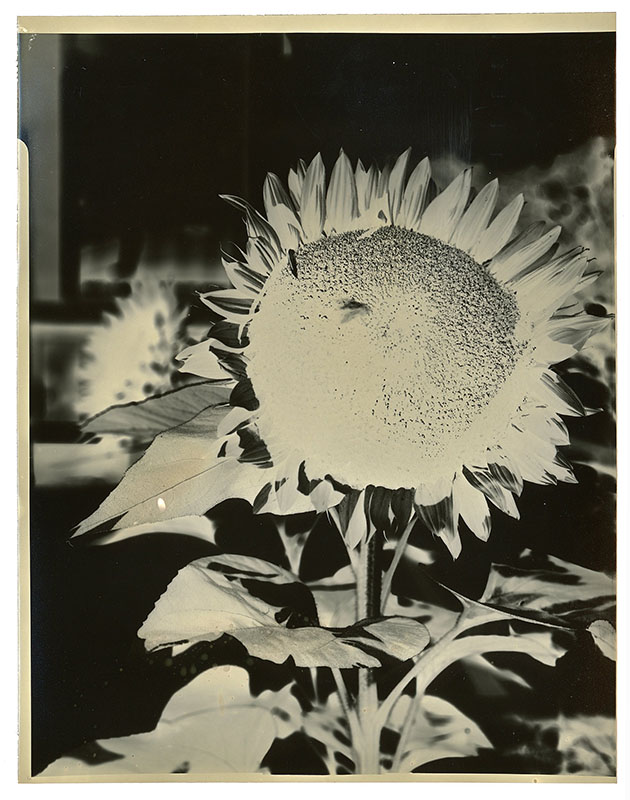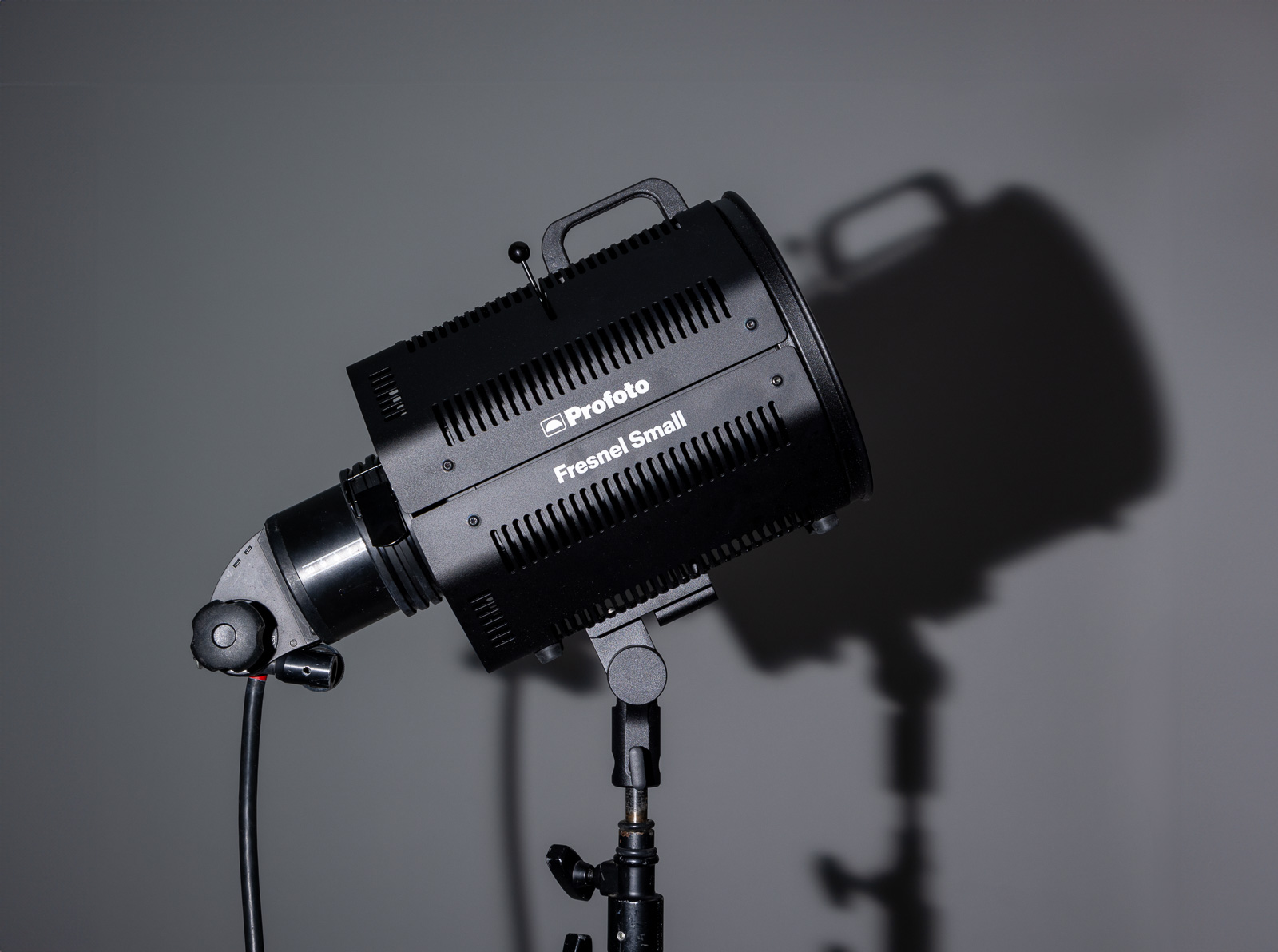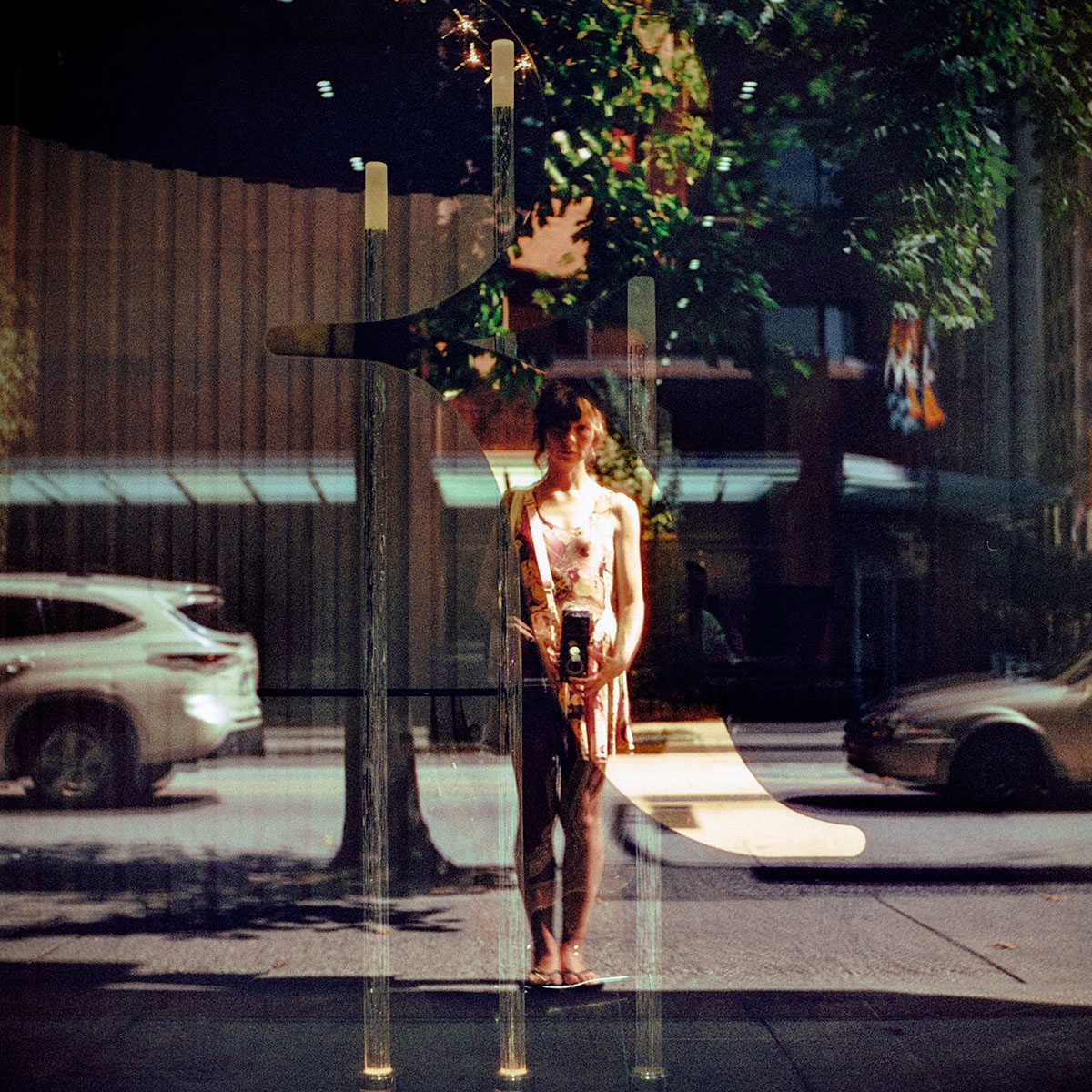A while ago, I wrote about using Ilford MG paper in a large format camera to make paper negatives, and using Ilford MG filters to control contrast. You can find the posts here if you are interested – https://www.beauphoto.com/paper-negatives-with-ilford-multigrade-filters/
There is a way to produce paper positives without having to go through exposing and scanning paper negatives first. Ilford makes a direct positive paper that will give you a positive image right from the camera (after processing of course). This is a high contrast, fixed grade, double weight fibre based paper that is a lot of fun to use. The 4×5 size fits nicely into a sheet film holder, though because it’s fibre, it has a bit of curl that takes some getting used to when loading. I did a few quick tests with this paper using a Miniportrait camera, an old Crown Graphic camera, and three different developers.
I started by using the Polaroid Miniportrait camera as I didn’t have my 4×5 at home that day. It can take 4 images on one sheet of film/paper. The camera is a bit of a challenge to use since it’s older, and only has faster shutter speeds or bulb. To add to the experiment, I made some spruce developer using a formula I use for making film developers. I wrote about alternative developers a while ago when I made film developer from chocolate tea. If you want to know more, see the post here – https://www.beauphoto.com/developing-film-with-chocolate/
When you look at the direct positive paper right out of the box (I clipped a corner of the sheet so I could look at it in white light) it is Pepto Bismol pink! It surprised me a little but getting a positive directly from the camera is a complicated process and the paper has some extra components in it to help make that happen. For my first attempt, I guessed at the exposure and exposed from 1 second to 8 seconds. Developed in the spruce developer, I got a mainly overexposed image that was pink tinted. This developer didn’t clear the pink from the paper, but a further test of re-developing a corner of the image in MG developer made the pink disappear. It was an interesting effect, and it might be that this particular developer is not strong enough to clear the pink. You can see below that it also left the correctly exposed image pink. This developer did process a sheet of Ilford MG RC paper just fine though. I think I will have to do more testing!
This is the first exposure, and three of the frames are overexposed. It made a good test for the spruce developer though. The white corner shows that the Ilford Multigrade developer cleared the pink from the print. It did stain the paper, but the print had not been well washed after the first development.
It’s important to understand that when using this paper, if your image comes out white or very bright, this is overexposed, and if it is very dark, it is underexposed. This is opposite of how you might judge the exposures of film or paper negatives, or prints in the darkroom, which are too dark when overexposed.
Next, I thought it would be a better experiment if I also tried the recommended Ilford MG paper developer as well as an alternative developer. Using a full frame camera also shows larger details with a better range of tones.
This is my first test with the positive paper on a full frame 4×5 camera. This sheet was developed in Ilford MG Paper Developer. There are three times here – left to right are 3 seconds, 2 seconds, then 1 second. It looked like 1 second was still a little long, so I went with 1/2 second. The direct positive paper is very contrasty and isn’t affected by multigrade filters. The contrast can be controlled by pre-flashing the paper before exposure, but that will be for the next set of experiments with this paper.
Since I wanted to try an alternative developer again, I mixed up some Caffenol. I developed the paper in a tank using the MOD54 4×5 film holder that fits in a Paterson tank. While it works well with RC paper, the fibre paper became a little too soft during processing and the sheets didn’t stay secured very well in the holder. I would recommend tray processing it in a darkroom if possible. This would also allow you to check the development progress. The images below were developed in the caffenol for 5 minutes, and while the coffee stained both the direct positive paper and the RC paper, it did clear the pink. The stain does give a nice warm tone to the image though.
This is just the start of my experiments with direct positive paper and I am interested to try some contrast control methods, as well as other alternative developers. This paper is also perfect for use in pinhole cameras since you would get positive images from the camera – much more satisfying I think. Watch for upcoming posts with more images as the journey continues.


